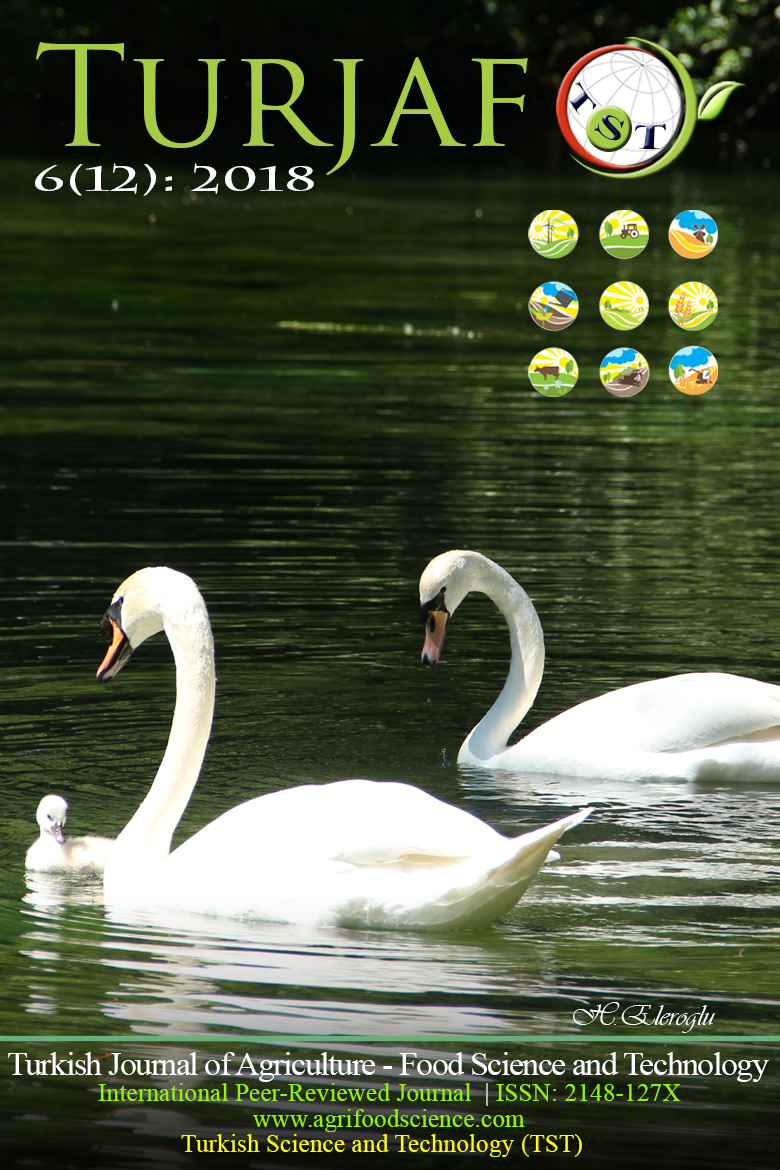Growth and Yield of Hybrid Maize as Influenced by Fertilizer Management
DOI:
https://doi.org/10.24925/turjaf.v6i12.1727-1733.1965Keywords:
Growth, Yield, Hybrid Maize, Fertilizer, CompostAbstract
An experiment was carried out at the Agronomy Field Laboratory, Department of Agronomy, Hajee Mohammad Danesh Science and Technology University, Bangladesh during the rabi season (December to May), 2012-13 to study the effect of different organic and inorganic fertilizers on growth and development of hybrid maize (Denali). The experiment was laid out in Randomized Complete block Design with three replications with 30 plots. Ten fertilizer treatments (T1= Compost, T2= Cow dung, T3= Poultry manure, T4= Recommended fertilizer dose, T5= Compost + Half recommended fertilizer dose, T6= Compost + Full recommended fertilizer dose, T7= Cow dung + Half recommended fertilizer dose, T8= Cow dung + Full recommended fertilizer dose, T9= Poultry manure + Half recommended fertilizer dose, T10= Poultry manure + Full recommended fertilizer dose. The recommended fertilizer dose was 500 Kg ha-1 urea + 250 Kg ha-1 TSP + 200 Kg ha-1 MP + 15 Kg ha-1 ZnSO4 + 6 Kg ha-1 Boric Acid. And the rate of Compost, Cow dung and Poultry manure was 10t/ha. The effect of different manure and fertilizer doses on the yield and yield attributes were significant. The plant height, number of leaves per plant, weight of stem per plant, weight of leaves per plant, length of cob, grain weight per cob, diameter of cob, no. of grains per row, no. of total grains per cob, 1000-grain weight, yield plant-1, yield ha-1 were significantly affected by different manures and fertilizer uses with different doses. The treatments T1, T2, T3, T4, T5, T6, T7, T8, T9 and T10 gave grain yield 10.16, 9.09, 8.49, 14.34, 13.35, 18.12, 11.99, 17.09, 11.40 and 15.98 t ha-1, respectively. The T6 Treatment gave higher grain yield (18.12) t ha-1 and the T3 treatment performed lowest grain yield (8.49 t ha-1). The application of compost and full dose fertilizer is higher yielding. Balance nutrition with enough organic matter enrichment of the soil is the cause of this result.Downloads
Published
17.12.2018
How to Cite
Hasan, M. M., Ray, T. K., Islam, K. M. M., Ali, S. Y., Muhammad, N., Rahman, M. A., & Barman, N. C. (2018). Growth and Yield of Hybrid Maize as Influenced by Fertilizer Management. Turkish Journal of Agriculture - Food Science and Technology, 6(12), 1727–1733. https://doi.org/10.24925/turjaf.v6i12.1727-1733.1965
Issue
Section
Research Paper
License
This work is licensed under a Creative Commons Attribution-NonCommercial 4.0 International License.

























